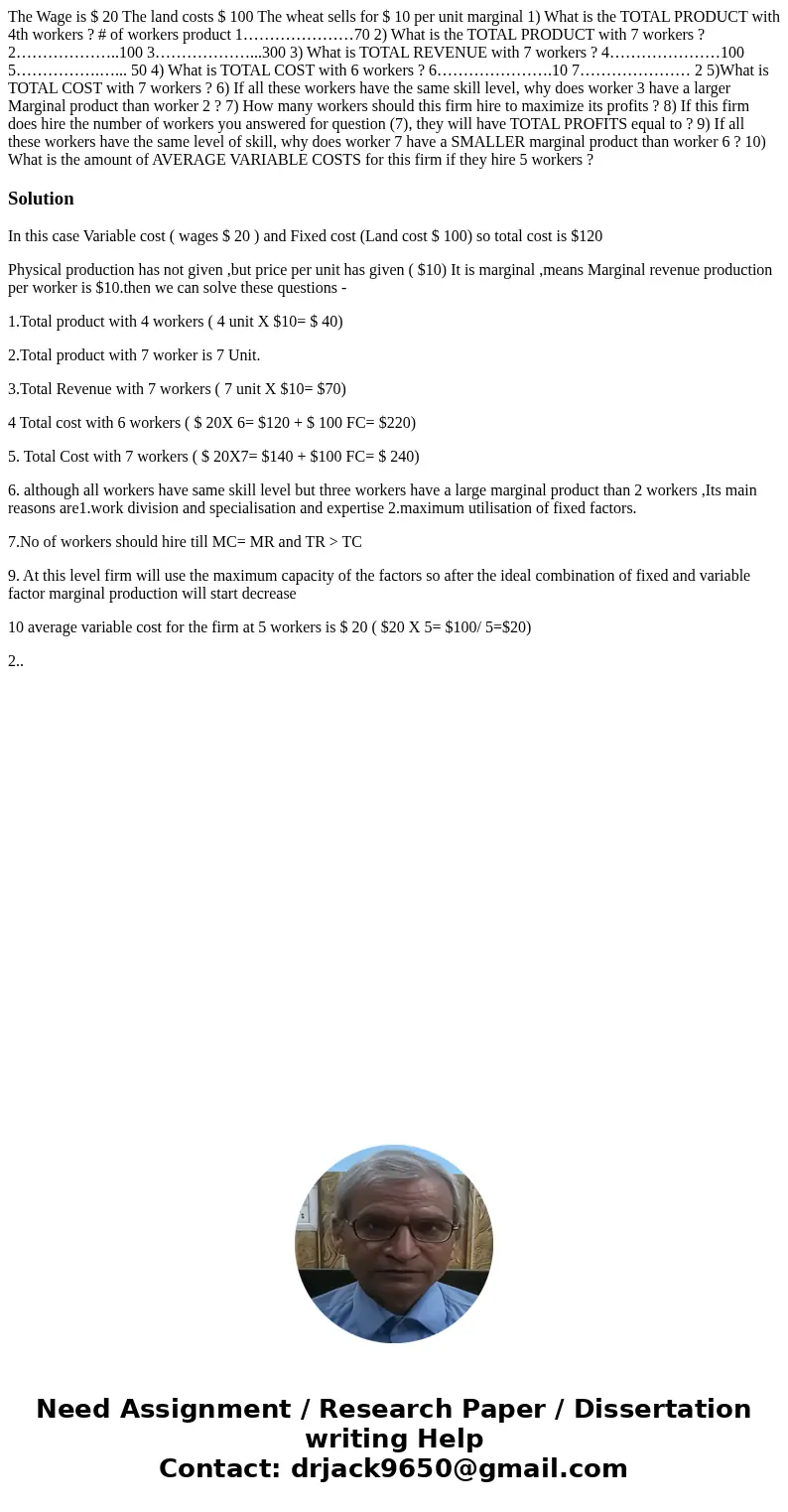The Wage is 20 The land costs 100 The wheat sells for 10
The Wage is $ 20 The land costs $ 100 The wheat sells for $ 10 per unit marginal 1) What is the TOTAL PRODUCT with 4th workers ? # of workers product 1…………………70 2) What is the TOTAL PRODUCT with 7 workers ? 2………………..100 3………………...300 3) What is TOTAL REVENUE with 7 workers ? 4…………………100 5…………….…... 50 4) What is TOTAL COST with 6 workers ? 6………………….10 7………………… 2 5)What is TOTAL COST with 7 workers ? 6) If all these workers have the same skill level, why does worker 3 have a larger Marginal product than worker 2 ? 7) How many workers should this firm hire to maximize its profits ? 8) If this firm does hire the number of workers you answered for question (7), they will have TOTAL PROFITS equal to ? 9) If all these workers have the same level of skill, why does worker 7 have a SMALLER marginal product than worker 6 ? 10) What is the amount of AVERAGE VARIABLE COSTS for this firm if they hire 5 workers ?
Solution
In this case Variable cost ( wages $ 20 ) and Fixed cost (Land cost $ 100) so total cost is $120
Physical production has not given ,but price per unit has given ( $10) It is marginal ,means Marginal revenue production per worker is $10.then we can solve these questions -
1.Total product with 4 workers ( 4 unit X $10= $ 40)
2.Total product with 7 worker is 7 Unit.
3.Total Revenue with 7 workers ( 7 unit X $10= $70)
4 Total cost with 6 workers ( $ 20X 6= $120 + $ 100 FC= $220)
5. Total Cost with 7 workers ( $ 20X7= $140 + $100 FC= $ 240)
6. although all workers have same skill level but three workers have a large marginal product than 2 workers ,Its main reasons are1.work division and specialisation and expertise 2.maximum utilisation of fixed factors.
7.No of workers should hire till MC= MR and TR > TC
9. At this level firm will use the maximum capacity of the factors so after the ideal combination of fixed and variable factor marginal production will start decrease
10 average variable cost for the firm at 5 workers is $ 20 ( $20 X 5= $100/ 5=$20)
2..

 Homework Sourse
Homework Sourse